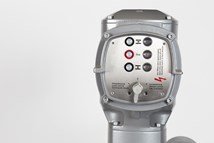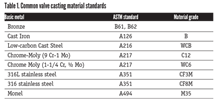President’s Four-Step Plan to Make U.S. “Magnet" for Manufacturing Jobs
The U.S. has added 500,000 new manufacturing jobs over the past 3 years.
Partnering with businesses and communities to invest in American-made technologies and American workers through a network of new Manufacturing Innovation Institutes: The President has proposed a one-time $1 billion investment to create a network of 15 manufacturing innovation institutes across the country, and urges Congress to act on this proposal. But to make progress right away, he is also acting through executive authority to launch three new institutes, which are partnerships among business, universities and community colleges, and government, to develop and build manufacturing technologies and capabilities that will help U.S.-based manufacturers and workers create good jobs.
Ending tax breaks to ship jobs overseas and making the U.S. more competitive: To support our manufacturers and encourage companies to invest in the U.S., the President has proposed to reform our business tax code, lowering the rate for manufacturers to 25 percent, expanding and making permanent the research and development tax credit, and putting in place a global minimum tax to prevent a race to the bottom in corporate tax rates.
Bringing jobs back: The President has proposed a new partnership with communities to attract manufacturers and their supply chains, especially to hard hit manufacturing towns. The President is also proposing to expand SelectUSA, a program designed to partner with our governors and mayors to bring in business investment from around the world, ensuring that America can compete globally and bring jobs and investment to our shores.
Leveling the playing field and opening markets for American-made products: In addition to the President’s efforts to double exports, including through new steps to open markets in Asia and Europe to American-made goods, the President will continue to enforce trade laws to protect American workers from unfair trade practices and strengthen the Interagency Trade Enforcement Center launched last year.
RELATED CONTENT
-
Which Gate Valve is Best for Today's Waterworks Systems?
A historical perspective may provide the answer.
-
The Biggest Valves: Sizes Growing in Step with Greater Demand
Valve manufacturers that have the expertise, skills, equipment and facilities to produce large valves are rare.
-
PFAS Chemicals and PTFE: Should the Valve Industry Be Concerned?
Legislation moving through Congress could affect the future use of thousands of PFAS chemicals (per- and polyfluoroalkyl). The house passed H.R. 2467 in July of 2021 and, though the bill is general in nature, it assigns the responsibility to the Environmental Protection Agency (EPA) for determining which PFAS chemicals will be controlled or banned altogether.








 Unloading large gate valve.jpg;maxWidth=214)

